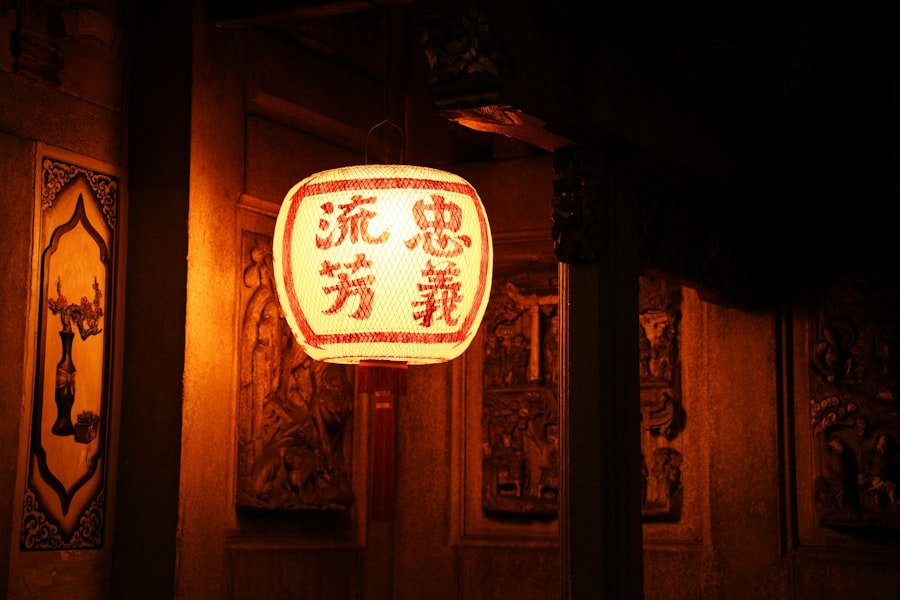Chinese martial arts, often referred to as Kung Fu or Wushu, encompass a rich tapestry of fighting styles, philosophies, and cultural traditions that have evolved over thousands of years. Originating from ancient China, these martial arts are not merely about combat; they embody a holistic approach to physical fitness, mental discipline, and spiritual growth. The practice of Chinese martial arts is deeply intertwined with Chinese culture, reflecting the values and beliefs of its people.
As such, it offers practitioners not only the skills to defend themselves but also a pathway to personal development and self-discovery. The allure of Chinese martial arts lies in their diversity and depth. From the fluid movements of Tai Chi to the explosive techniques of Wing Chun, each style presents unique characteristics and philosophies.
This variety allows individuals to find a practice that resonates with their personal goals, whether they seek self-defence, physical fitness, or a deeper understanding of Chinese culture. As interest in these arts continues to grow globally, many are drawn to the idea of learning not just the techniques but also the underlying principles that make Chinese martial arts a profound and enriching experience. Spaces are filling up fast! Register for Chinese classes at the LC Chinese School in Oslo today.
Table of Contents
ToggleSummary
- Chinese martial arts, also known as Kung Fu, have a rich history and are deeply rooted in Chinese culture and philosophy.
- It is important to familiarise yourself with basic Chinese terminology such as “qi”, “yin and yang”, and “dao” to better understand the principles of Chinese martial arts.
- The philosophy of Chinese martial arts emphasises discipline, respect, and self-improvement, as well as the integration of mind, body, and spirit.
- There are various styles of Chinese martial arts, each with its own unique techniques, forms, and principles, such as Tai Chi, Wing Chun, and Shaolin Kung Fu.
- Learning Chinese martial arts involves embracing the etiquette and culture, including bowing to show respect, following traditional rituals, and understanding the historical significance of the art.
Basic Chinese Terminology for Martial Arts
To fully appreciate and engage with Chinese martial arts, it is essential to familiarise oneself with some basic terminology. Understanding these terms not only enhances communication with instructors and fellow practitioners but also deepens one’s connection to the art itself. For instance, the term “Kung Fu” (功夫) translates to “skill achieved through hard work,” highlighting the dedication required to master any martial art.
Similarly, “Wushu” (武术) means “martial art” and encompasses a wide range of styles and practices. Another important term is “Qi” (气), which refers to the vital energy that flows through all living beings. In many Chinese martial arts, practitioners learn to harness and cultivate their Qi to enhance their physical abilities and mental focus.
Additionally, terms like “Sifu” (师父), meaning “master” or “teacher,” and “Tui Shou” (推手), which translates to “pushing hands,” are integral to understanding the dynamics of training and interaction within these arts. By learning this terminology, practitioners can engage more meaningfully in their training and appreciate the cultural nuances embedded within the practice.
Understanding the Philosophy of Chinese Martial Arts

The philosophy underpinning Chinese martial arts is as intricate as the techniques themselves. Central to this philosophy is the concept of balance—both in physical movements and in life. Many styles emphasise the importance of Yin and Yang (阴阳), representing opposing forces that are interconnected and interdependent.
This principle teaches practitioners that strength can be found in softness and that victory often comes from yielding rather than forceful aggression. Moreover, Chinese martial arts often incorporate elements of Confucianism, Taoism, and Buddhism, each contributing to a holistic worldview that values harmony, respect, and self-cultivation. Practitioners are encouraged to develop not only their physical prowess but also their character and moral integrity.
This philosophical approach fosters a sense of community among practitioners, as they support one another in their journeys towards self-improvement and enlightenment.
Exploring Different Styles of Chinese Martial Arts
The world of Chinese martial arts is vast, with numerous styles each offering distinct techniques and philosophies. Some of the most well-known styles include Shaolin Kung Fu, Tai Chi, Wing Chun, and Baguazhang. Shaolin Kung Fu is perhaps the most iconic, originating from the Shaolin Temple and characterised by its dynamic movements and rigorous training methods.
It combines physical conditioning with spiritual development, making it a comprehensive practice. Tai Chi, on the other hand, is often practised for its health benefits rather than combat effectiveness. Known for its slow, flowing movements, Tai Chi promotes relaxation, balance, and mindfulness.
It is particularly popular among older adults seeking to improve their flexibility and overall well-being. Wing Chun is another fascinating style that focuses on close-range combat techniques and quick reflexes, emphasising efficiency over brute strength. Each style offers unique insights into the principles of movement and combat, allowing practitioners to explore various aspects of martial arts.
Learning the Etiquette and Culture of Chinese Martial Arts
Understanding the etiquette associated with Chinese martial arts is crucial for anyone looking to immerse themselves in this discipline. Respect is a fundamental value in martial arts training; practitioners are expected to show deference to their instructors, fellow students, and the traditions of the art itself. Bowing upon entering or leaving the training area is a common practice that signifies respect for the space and those within it.
Additionally, many schools have specific rituals or customs that reflect their unique lineage or style. For instance, students may be required to address their instructors using formal titles or participate in traditional ceremonies during belt promotions or special events. Embracing these cultural aspects not only enriches the training experience but also fosters a sense of belonging within the martial arts community.
Mastering the Fundamentals of Chinese Martial Arts

Mastering the fundamentals is essential for anyone embarking on a journey in Chinese martial arts. These foundational skills serve as the building blocks for more advanced techniques and forms. Key elements include stances, footwork, strikes, blocks, and basic forms or routines specific to each style.
Practitioners must dedicate time to honing these skills through repetition and mindful practice. In addition to physical techniques, understanding body mechanics plays a crucial role in mastering martial arts. This includes learning how to generate power from one’s core, maintain balance during movements, and execute techniques with precision.
As students progress in their training, they will find that these fundamentals not only enhance their martial abilities but also contribute to improved overall fitness and body awareness.
Incorporating Chinese Martial Arts into Your Fitness Routine
Incorporating Chinese martial arts into your fitness routine can provide a refreshing alternative to traditional workouts. The dynamic movements involved in martial arts training offer a full-body workout that improves strength, flexibility, endurance, and coordination. Unlike conventional exercise regimens that may become monotonous over time, martial arts training keeps practitioners engaged through its diverse techniques and forms.
Moreover, many styles of Chinese martial arts emphasise mindfulness and mental focus during practice. This aspect can enhance one’s overall fitness experience by promoting stress relief and mental clarity. Whether practising Tai Chi for its gentle movements or engaging in more vigorous styles like Shaolin Kung Fu, individuals can enjoy a holistic approach to fitness that nurtures both body and mind.
Finding a Reputable Chinese Martial Arts Instructor in Oslo
For those interested in pursuing Chinese martial arts in Oslo, finding a reputable instructor is paramount. A skilled teacher not only imparts technical knowledge but also embodies the values and philosophies of the art form. When searching for an instructor or school, it is advisable to consider factors such as their experience, teaching style, and lineage within the martial arts community.
Visiting local schools or dojos can provide valuable insights into their training environment and culture. Many instructors offer introductory classes or trial sessions that allow prospective students to gauge their compatibility with the teaching style before committing long-term. Engaging with fellow practitioners can also yield recommendations for reputable instructors who can guide you on your journey through Chinese martial arts.
Tips for Practicing Chinese Martial Arts Safely
Safety should always be a priority when practising any form of martial arts. To minimise the risk of injury while training in Chinese martial arts, it is essential to warm up properly before each session. This preparation helps increase blood flow to muscles and joints, reducing the likelihood of strains or sprains during practice.
Additionally, practitioners should listen to their bodies and avoid pushing themselves beyond their limits. Gradual progression is key; mastering techniques takes time and patience. Wearing appropriate protective gear during sparring sessions can also enhance safety while allowing practitioners to test their skills in a controlled environment.
By prioritising safety measures, individuals can enjoy a fulfilling training experience while minimising potential risks.
The Benefits of Practicing Chinese Martial Arts
The benefits of practising Chinese martial arts extend far beyond physical fitness; they encompass mental, emotional, and social dimensions as well. Physically, regular training improves cardiovascular health, strength, flexibility, and coordination—attributes that contribute to overall well-being. Moreover, engaging in martial arts fosters discipline and perseverance as practitioners work towards mastering complex techniques.
Mentally, the focus required during training cultivates mindfulness and reduces stress levels. Many practitioners report enhanced concentration and clarity in other areas of life as a result of their training. Additionally, participating in a community of like-minded individuals fosters social connections that can lead to lasting friendships and support networks.
Embracing the Tradition and History of Chinese Martial Arts in Oslo
In Oslo, enthusiasts have the unique opportunity to embrace the rich tradition and history of Chinese martial arts while connecting with a global community of practitioners. The LC Chinese School offers an array of courses designed for individuals at all levels—from beginners eager to learn basic techniques to advanced students seeking deeper insights into specific styles. The school’s commitment to preserving traditional practices while adapting them for modern learners ensures that students receive authentic instruction rooted in centuries-old wisdom.
By participating in classes at LC Chinese School, students not only develop their martial skills but also gain an appreciation for the cultural heritage that underpins these practices. In conclusion, engaging with Chinese martial arts at LC Chinese School provides an enriching experience that transcends mere physical training; it offers a pathway to personal growth, cultural understanding, and community connection within Oslo’s vibrant landscape. Whether you are drawn by the desire for self-defence or simply wish to explore a new form of exercise steeped in tradition, there is no better time than now to embark on this transformative journey.







